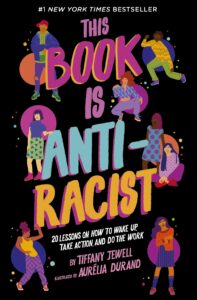On March 8th we celebrate International Women’s Day. The day is dedicated to celebrating women’s achievements and seeking gender equality.
International Women’s Day was marked for the first time in 1911 and the date March 8th was fixed in 1913. The first time the United Nations celebrated the day was in 1975. March 8th also has an annual theme and the UN and the UN Women have stated that the theme for the 2022 International Women’s Day is “Gender equality today for a sustainable tomorrow”. The purpose of having this theme is to highlight the need for gender equality in the pursuit of having a sustainable future and to uplift women who are doing a tremendous job and working for climate change adaptation, mitigation and legislation to ensure a more sustainable future for everyone. Read more about sustainability and gender equality on UN’s and UN Women’s websites. Additionally, International Women’s Day declared that their 2022 campaign is #BreakTheBias. International Women’s Day on their website further explain their campaign as follows:
“Imagine a gender equal world.
A world free of bias, stereotypes, and discrimination.
A world that is diverse, equitable, and inclusive.
A world where difference is valued and celebrated.
Together we can forge women’s equality.
Collectively we can all #BreakTheBias.
Individually, we’re all responsible for our own thoughts and actions – all day, every day.
We can break the bias in our communities.
We can break the bias in our workplaces.
We can break the bias in our schools, colleges and universities.
Together, we can all break the bias – on International Women’s Day (IWD) and beyond.”
Biases, whether conscious or unconscious, are not only hurtful and dangerous but directly contributes to gender inequality and the belief of a more “weaker” or “incompetent” body and mind. Biases are already placed on you as a woman and your sexuality, religion, race, nationality, language, ideology, disability and/or occupation can in many cases add to the already existing prejudice and discrimination directed to your gender. To #BreakTheBias globally would mean mobility and freedom for women all over. It would mean the possibility for women to act and speak as they desire. To hear more about the campaign you can check out Anisa Nandaula’s spoken word poet about #BreakTheBias.
…………………………………………………………………
To find time for celebration might be hard or even impossible when following the current global conflicts and wars going around and seeing all women and so many others suffering and becoming refugees. However, today can be a day to donate to a charity aiding women, reflecting on female role models in your life or that you look up to or to read and educate yourself more on women’s issues and how conflicts and global warming places women in a vulnerable state. Regardless today is March 8th and this day is for us Women. I want to wish everyone who identifies as a Woman a really wonderful day wherever you might be. I wish that you have support, care and love in your surroundings and that despite anything you will succeed with all your dreams and passions. And for everyone who has a Woman in their life, as a mother, a daughter, a sister, a partner, a wife, a friend or even a neighbour, to be kind, encouraging, and respectful to Women.









